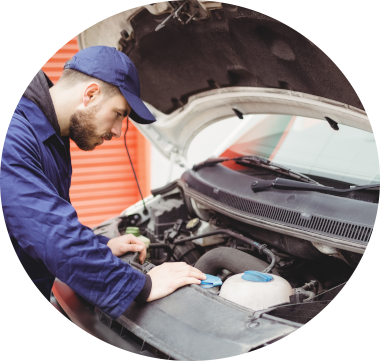All Categories
Featured

Preserving your vehicle's tires is important to make certain a smooth, safe, and effective driving experience. Two vital services that are usually ignored yet have a substantial influence on tire long life and performance are tire rotation and placement. These solutions assist keep your lorry running effectively and prevent uneven tire wear that can influence both safety and security and gas economic climate. Let's dive right into what tire rotation and positioning are and why they are necessary for your vehicle.
What Is Tire Turning? Tire turning is the procedure of relocating your tires from one setting to an additional to guarantee they use uniformly. Given that your auto's tires work at different rates depending on their position (front tires versus rear tires), rotating them routinely helps to distribute the wear uniformly, bring about a longer life-span for your tires.
Tires on the front axle tend to use faster than those on the back axle, specifically in front-wheel-drive autos, where the front tires handle both guiding and power. On the other hand, rear tires could use unevenly relying on the car's weight distribution and driving problems. By revolving your tires every 6,000 to 8,000 miles (or as recommended by the maker), you'll ensure a much more well balanced wear pattern.
What Is Tire Alignment? Tire placement, also recognized as wheel alignment, describes readjusting the angles of your automobile's wheels to the manufacturer's specs. Correct placement guarantees that your tires are aiming in the best direction, and it assists make the most of tire life and boost car handling. There are 3 major elements of placement: camber, wheel, and toe.
Camber describes the tilt of the tires from the front of the vehicle. If your tires are tilted way too much internal or outward, it can trigger uneven wear. Caster refers to the angle of the steering axis when viewed from the side of the vehicle. This impacts the stability of the steering, especially when driving directly. Toe refers to the angle at which the tires aim inward or outward when seen from above. This impacts exactly how your vehicle tracks on the roadway. A correct positioning ensures that all 4 tires are pointing directly ahead and are tilted correctly. Imbalance can arise from hitting fractures, curbs, or merely from the wear of suspension components in time.
Why Tire Turning and Positioning Issue. Extended Tire Life. Both tire rotation and placement assistance protect against uneven tire wear. When your tires use evenly, they last longer, which can conserve you money over time by decreasing the demand for early substitutes.
Improved Safety And Security. Correct tire turning and alignment improve automobile stability and handling. Misaligned tires or unevenly used tires can negatively influence your ability to steer and stop your lorry, specifically in emergency situations. Routine maintenance ensures your tires execute ideally, providing a safer driving experience.
Much Better Gas Efficiency. If your tires are not aligned appropriately, they might drag versus the road surface, triggering resistance. This added rubbing can minimize fuel efficiency, creating your lorry to take in more gas. Routine tire placement makes certain that your vehicle relocates effectively, improving gas mileage.
Enhanced Comfort. Misalignment or unevenly worn tires can lead to a rougher ride, as your automobile might draw to one side or create resonances. By keeping your tires rotated and straightened, you'll delight in a smoother and much more comfy driving experience.
Indications That Your Tires Need Turning or Positioning. It's important to remain sharp for any indications that your tires require rotation or positioning. Look out for these usual indications:
Irregular Tire Put On: If you notice that a person tire is substantially extra worn than the others, it may be time for a turning or placement. Guiding Pull: If your automobile pulls to one side while driving directly, this might suggest imbalance. Resonances: If you feel resonances in the steering wheel or the vehicle itself, it might be an indication of misalignment or unequal tire wear. Squealing Tires: Uncommon tire noise could additionally suggest incorrect positioning or the need for a tire rotation. Exactly how Often Should You Turn and Align Your Tires? Tire turning ought to normally be done every 6,000 to 8,000 miles or as specified in your vehicle's proprietor's manual. It's a great idea to revolve your tires during every oil adjustment, as this will certainly aid you remain on top of regular upkeep.
When it comes to positioning, it does not require as frequent solution. Typically, positioning must be examined a minimum of annually or whenever you discover concerns like drawing to one side or vibration. You may additionally need placement if you've struck a big pocket or aesthetic, which can toss your wheels out of alignment.
Conclusion: Keep Your Tires in Top Forming. Tire rotation and positioning are important solutions that maintain your lorry running efficiently, safely, and effectively. By making the effort to have your tires turned and straightened frequently, you're buying your auto's performance and longevity, while also boosting your safety on the roadway. Keep proactive with tire maintenance, and your cars and truck will thank you with far better gas economic climate, boosted handling, and prolonged tire life.
Latest Posts
Enhance Your Property with Overhead Door Equipment
Find Affordable Auto Repairs with Montclare’s Limited-Time Service Specials
Trusted Expenses Door Solutions for Houses and Organizations
More
Latest Posts
Enhance Your Property with Overhead Door Equipment
Find Affordable Auto Repairs with Montclare’s Limited-Time Service Specials
Trusted Expenses Door Solutions for Houses and Organizations